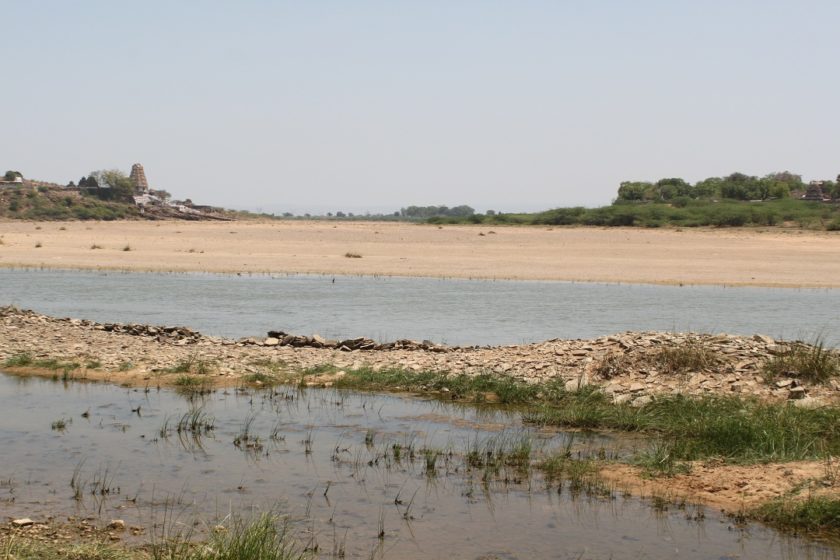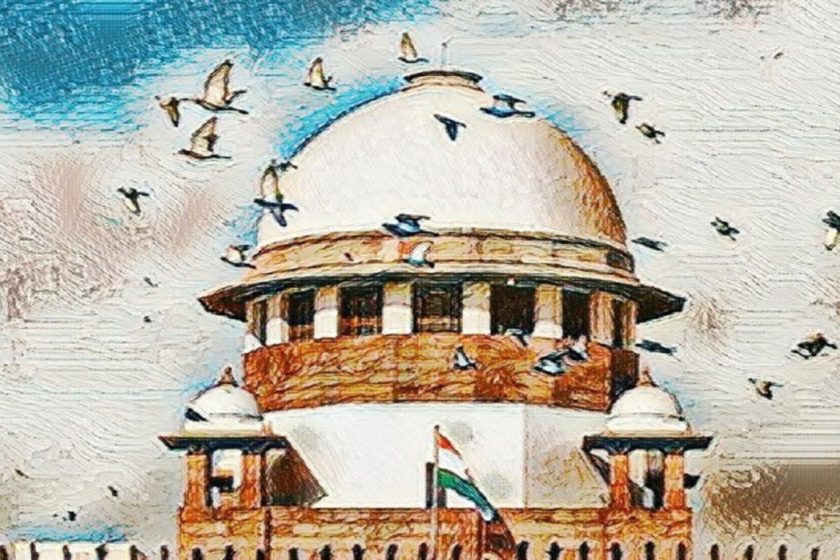Pushpagiri and its desecrated temples
Article by @HNAluru
As it dawns now, the glee of the morning sun here is seldom accompanied by the saccharine tweets of the parrots and sparrows. The cacophony of the chirrups of the birds craves to trail the blissful hymns that used to be rendered with a precision that could match only with the movement of the Sun and Moon.
The gatekeepers assigned to an eternal duty of preserving the temple, gaze down inscrutably into the river. Nestled in the most picturesque landscape of nature, the river flows inaudibly between two temples as if it were the to reminisce the horrors it has witnessed throughout. Called Pinakini – the divine bow of Lord Shiva, it is now colloquially called Penna, a declension apparent not just in its name but also in its state of affairs.
Time as the witness, the inscriptions wail of the forgotten glory this hamlet in the southern part of Andhra Pradesh held before.
It is a small village close to the now district head-quarters of the Cuddapah district in Andhra Pradesh. The place is called Pushpagiri – A mound of flowers.
Aloof from the parochial lines of discordant beliefs in Hinduism, Pushpagiri has become a centre of intellectual theology under countless kingdoms. In its bosom of faith, it nurtured the ideology of Shaivism and all its primaeval theories with the same fervour as Vaishnavism. When the Hindu world was being torn between the mutually exclusive philosophies about the supremacy of Gods in the same Pantheon, Pushpagiri has tried to persuade the masses to traverse to the thinking of ‘transcendental theology’. The two temples, one for Lord Shiva and another for Lord Vishnu on either bank of the Pinakini river stand as a (partially) living testimony of this catholic notion.
Legend has it that to extricate his mother Vinutha from the shackles of slavery of his stepmother Kadruva, Garuda has embarked on a journey to the heavens to conquer Lord Indra and fetch the holy nectar of Ambrosia. Garuda while returning from the heavenly abode passed by the hamlet then called – Kampalle, where he unintentionally spilt a drop into a local pond formed by the river Pinakini.
The pond was thus granted divine powers of transforming back to their youth, all those that took a dip in it. Consequently, people began to throng the pond for a dip in its waters. Appalled by the prospect of all human beings becoming immortal, the Devas approached God Vishnu who instructs Garuda to cover up the pond with a rock from a nearby mountain.
The megalith Garuda placed on the pond, started floating like a flower – Pushpa in Sanskrit. To stop the pond from surfacing again, the supreme trio (God Brahma, God Vishnu and God Shiva) trampled the rock into the land. Consequently, the name Pushpagiri which in Sanskrit would mean a flowery mound.
Legends aside, Pushpagiri also has a considerable amount of veritable history around it. The Śrīśaila Khaṇda of Skanda Purāna and Rasaratnākara of Satyanātha vouch to this place where significant worship was happening and was mentioned as ‘Dakśina dwāra’ for the celebrated temple of Şrīşailam. This was attested by the inscriptions that abound the place from the time of Ikşvāku dynasty circa 2nd Century CE. From this period on, the list is long and illustrious, including Karikāla Chōla of Chōla dynasty has seemingly imparted significant importance to the site when he ruled the Pottapi nādu.
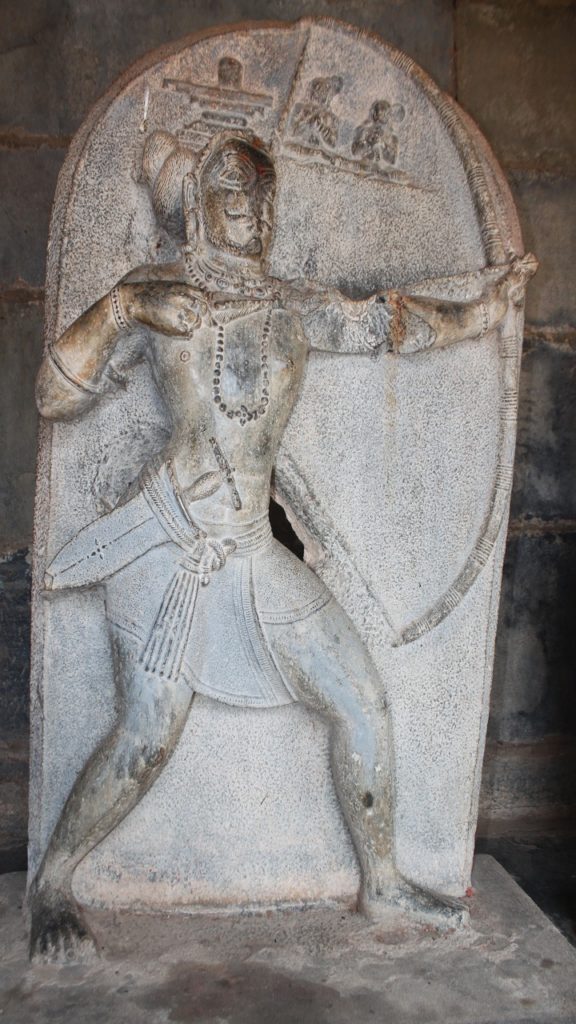
In time, this piece of land has reduced to a feudatory under bigger dynasties. Nevertheless, Geography helped and Pushpagiri retained its exclusivity both spiritually and politically. The temple complex has started attracting endowments from the rulers incessantly; Somadeva of Vaidumba dynasty, Chiddana Devaraja of Pallava dynasty, Yadava Singana of Kesa dynasty, Krishna Vallabha of Rāshtrakūta dynasty, Gangaya Sāhini and Ambadeva under Kākatiya dynasty and the Musunuri Nāyaks of Vijayanagar dynasty.
While these kings left inscriptions to the next generations to commemorate their contributions, some significantly contributed with their artistic providence, Gangaya Sāhini and Ambadeva built the Trikuteswara complex as a tribute to Lord Shiva for bestowing them with three daughters.
Musunuri Nāyaks built the Chennakeshava temple which exudes splendid architecture.
While it is common for the kings to be boisterous even in their devotion, Pushpagiri stands away from the crowd. A tantric saint Aghora Shivāchārya, apparently a Shaivite saw it apt to build the gateway-tower (Gopuram) for the Vaishnavite Chennakeshava Swamy temple.
There has been a surfeit of cults around the region of Pushpagiri. Beliefs and traditions date to times immemorial starting from the most traditional Vāmāchāra to the most recent Sāmyāchāra. The temples illustrate the slow and steady progress of Hindu beliefs in this region as the kings started embellishing the temple walls with sculptures that reflect their allegiance. The oldest of these reliefs start with Lakulīşa, a form of Lord Shiva that yields the caduceus symbolising the rising flow of the Kundalini Shakti to the zenith. This clearly demonstrates the presence of the Rasa Śaiva, Veera Pasupatha and Shakteya cults belonging to Vāmāchāra tradition.
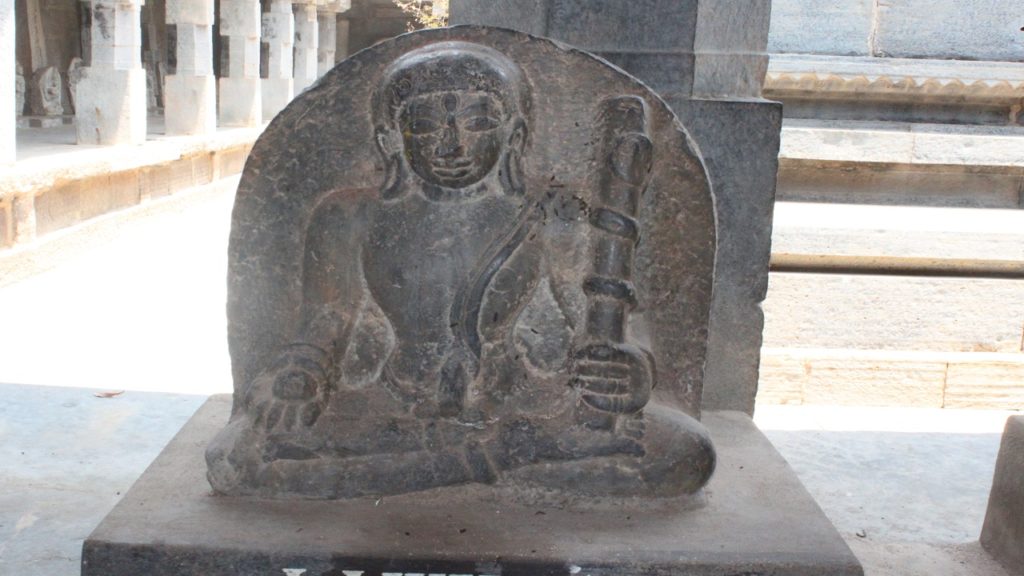
The river: Pinakini, the mighty river that is fabled to have emanated from the bow of Lord Shiva meanders through the gorges of Gandikota which is close-by and enters the domain of Pushpagiri from the West and turns briefly South and again changes to the East at Pushpagiri. In this process, four of its tributaries mingle with ‘Penna’ – Pāpāgni, Kumudvati, Valkala and Māndavya. This has seemingly enhanced the spiritual status of the place and has begotten it the coveted name “Panca Prayāga”.
Docked in the natural beauty – coupled with a vibrant economy – fuelled by the constant supply of water and resources the region flourished and if you enhance it with a centre for spiritual development, you have the best of all the worlds. People thronged to the place, kings revered and built monuments, Sages clamoured for spiritual development and it gave rise to one of the most vivacious yet dormant cultures. At its crowning moment, Pushpagiri had as many as 1116 temples dedicated to various forms of both Lord Shiva and Lord Vishnu. Some of the notable ones can be listed as below:
- Śrī Lakśmī Chennakeśava Swamy temple (Also called Śrī Śiva Keśava Swamy temple)
- Śrī Kāmākśi Vaidyanātheswara Swamy temple
- Śrī Santāna Malleśwara Swamy temple
- Śrī Trikūteshwara Swamy temple
- Śrī Indrānātha Swamy temple
- Śrī Kaśi Viśālākśi Viśwanātha Swamy temple
- Śrī Sākśi Malleśwara Swamy temple
- Śrī Agasthyeśwara Swamy temple
… and many more. There are at least 100 sanctums and abandoned Nandis that vouch to the fact that they were once revered in a temple.
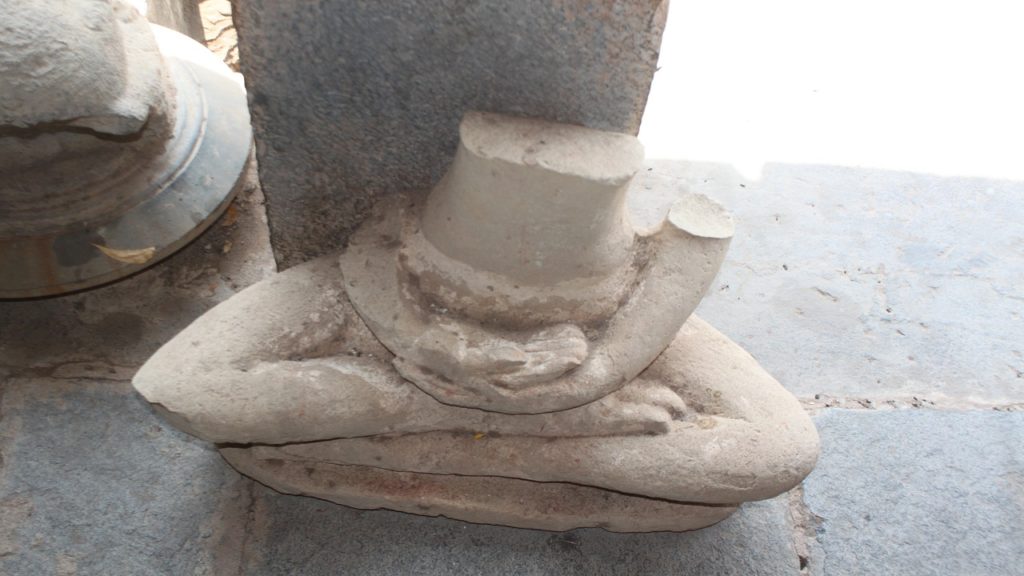
The story was supposed to have a happy ending until faiths that thought themselves as the most superior of all stepped in. It was a night of horrors. The carnage went on relentlessly as the statuaries were handicapped, crop fields destroyed and the mighty river seemed to stand still – forsaken. The cacophony of parrots and sparrows got muted in the tacit cries of the most revered of deities. Time itself has ostensibly cowered to transpire. But as it mustered the courage to move on, a day of destruction ensued. The river dolefully ferried the remnants of the culture once so esteemed into the Bay of Bengal. Thousands of monuments destroyed, sanctums desecrated and temples vandalised. History etched on rock and preserved in memories has been expunged in a bloody inundation of prejudice and intolerance. A new faith that challenges the very foundations of so many other moralities has taken their place.
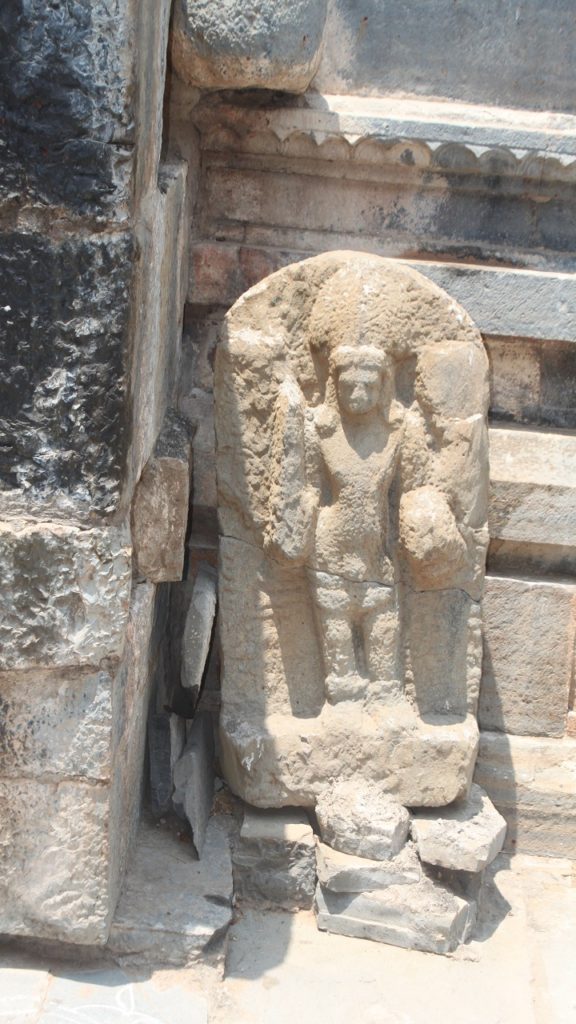
Today, the monuments stand there as a sore testament of what rivaling beliefs can do to civilization – uncared and unwanted. Most of the temples cannot even afford a proper Pūja (worship) and the river as usual flows in all serenity but sans the rhythmic chants, the cacophony of birds and morning glee of the first ray of the sun.
#ReclaimTemples

